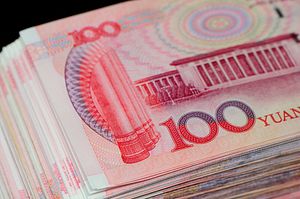China’s central bank will launch the China International Payment System (CIPS) this fall. The system will be located in Shanghai and will facilitate cross-border trade settlement, direct investment, and other RMB-denominated deals. This will reduce transactional costs for RMB clearing and make such transactions easier. The international payment system is expected to expand internationalization of the RMB as China continues down the long path of market-oriented reforms.
China currently uses the China National Payment System (CNAPS), with a 2014 settlement amount of 6.55 trillion RMB, according to the People’s Bank of China. The transition to CIPS will better allow use of both Chinese and English and will run on SWIFT ISO20022 standards, consolidating a system of multiple clearing houses. The system is currently being tested among 20 banks and will be rolled out to other banks in the fall. Cross-border use of RMB is expected to rise as it becomes easier to engage in foreign currency transactions.
Improving the ability to conduct international RMB transactions is an essential component of China’s capital account and exchange rate liberalization process, as well as of its “Going Out” policy and the One Belt, One Road initiative. Under the Third Plenary Session of the 18th Communist Party Congress, China committed to further opening up its capital account and increasing exchange rate liberalization. This will allow transactions to be further carried out in RMB and to somewhat loosen the rate at which the RMB is internationally traded. The One Belt One Road initiative aims to expand the scope and scale of the bilateral currency swap and settlement.
China has already stepped up RMB internationalization in recent years by creating bilateral swaps, expanding trade settlement in RMB, and establishing and expanding the offshore RMB bond market. The Qualified Foreign Institutional Investor (QFII) and Renminbi Qualified Foreign Institutional Investor (RQFII) programs allow foreign investors to trade RMB-denominated securities on mainland stock exchanges using foreign currencies and RMB respectively. The Qualified Domestic Institutional Investor (QDII) program allows Chinese institutional investors to invest in foreign securities markets. While opening up the capital account to some extent, these programs face limitations that prevent investors from expanding their reach in cross-border financial investment.
The next stages of capital account and exchange rate liberalization will pose challenges as restrictions are reduced. Most recently, foreign firms in China have been allowed to convert all their foreign currency capital into RMB to reduce currency risk. Some foreign firms will also be allowed to buy stakes in domestic Chinese firms. The Qualified Domestic Individual Investor (QDII2) program will allow certain high net-worth Chinese individual investors to invest abroad, which may dramatically increase capital outflows. China’s widening of the RMB trading band in March 2014 has given more play to market forces in setting the exchange rate. A further expansion of the trading band will usher in an even larger role for market forces, with greater potential for large currency fluctuations. Risk safeguards must be put in place to offer buffers against volatility as capital and exchange rate controls are loosened.
Improving the financial infrastructure for internationalization of the RMB is essential, and setting up the China International Payment System will bring China closer to having a major currency for both trade and investment purposes. With lower transactions costs, more RMB business can be carried out as market-oriented reforms unfold one by one.

































